New Cleansing Agent Development Process Utilizing AI And Molecular Simulation Technologies Examined: Collaboration with Kirin Holdings, FANCL, and Keio University
- Research and Technology
November 24, 2022
Kirin Holdings Company, Limited
● Applied to product development of cleansing agents with high makeup removal function
● Unifying functions of makeup remover and facial wash to reduce cleansing time, save water, and reduce environmental impact
● Building a cleansing capability prediction system to reveal which ingredients are better for cleansing
TOKYO, November 24, 2022 - Kirin Holdings Company, Limited. (Kirin Holdings), FANCL CORPORATION (FANCL), and Keio University have conducted research on the development process of new cleansing agents. As a result, based on experimental data accumulated by FANCL, the possibility of constructing a system was found that could swiftly predict the makeup removal performance of cleansing agents with high accuracy. The method combines Kirin Holdings’ machine learning technology*1 and Keio University's molecular simulation technology.*2
The results of this research were presented jointly with FANCL and Keio University at the 32nd International IFSCC London Congress 2022, held from September 20 to September 22, 2022.
*1 One of the methods of analyzing data among AI techniques. It indicates that a computer iteratively learns from data and finds patterns contained therein. In this example, the computer has the ability to predict the makeup removal performance of an unknown cleansing agent by learning data containing both the raw materials of the cleansing agent and the makeup removal performance of the cleansing agent.
*2 A method to analyze physical phenomena at the molecular level by reproducing the movement of atoms and molecules in a virtual space via computer.
Research Background and Objectives
FANCL has conducted a variety of research on cleansing agents. In recent years, in response to the need for shorter work hours as women enter the workforce and to the growing awareness in society of the need to reduce environmental impact, FANCL has begun development of a water-based cleansing agent that combines the functions of a cleansing agent and face wash in a single product. By employing machine learning and molecular simulation technologies in the product development process, FANCL conducted joint research with Kirin Holdings and Keio University with the aim of rapidly finding the optimal combination of cosmetic ingredients with high makeup removal performance out of an infinite number of possible combinations and bringing an innovative product to market.
Research Methods and Results
Since 2016, FANCL has calculated the removal rate of makeup stains with commercially available waterproof eyeliner and artificial leather, and has accumulated more than 500 actual measurement data by calculating the cleansing rate. This time, this data was utilized with Kirin Holdings’ machine learning technology to create a system that predicts the performance of makeup remover.
In addition to data on the composition of the cleansing agent components and cleansing rate, information obtained from the molecular structure of the ingredients used - such as chain length and molecular size - was quantified using a database of ingredients and added to the machine learning technology to predict the cleansing rate with high accuracy (coefficient of determination*3 R2 = 0.765, see Figure 1).
*3 An indicator of the goodness of fit of values estimated by machine learning techniques, taking values from 0 to 1, with values closer to 1 indicating that the predicted value fits the actual data.
-
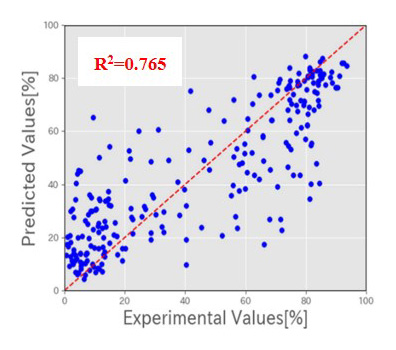
Figure 1 Comparison of AI predicted and measured cleansing rates
Kirin Holdings' AI Machine Learning Technology
Kirin Holdings has been accumulating knowledge of machine learning technology through the development of Brewing Takumi AI machine-learning beer development support system and other methods that support the development of new beer products in order to dramatically improve operational efficiency and create value in the time created. There are more than 10,000 types of cosmetic ingredients, and the number of combinations of these ingredients is enormous. By utilizing Kirin Holdings’ machine learning technology in the development of cleansing agents, we aim to develop highly functional products in an efficient manner.
Cleansing Rates Predicted and the Cleansing Rates Generally Matched
Using the cleansing rate prediction system constructed in this study, 100,000 calculations were performed on a computer using Kirin Holdings’ machine learning technology. The results showed that among surfactants, FANCL's proprietary ingredient, eicosaglycerol hexacaprylate*4 (EH), had the highest makeup removal performance, and its combination with certain ingredients such as PPG-9 diglyceryl ether*5 and cyclohexylglycerin*6, which are moisturizing agents, tended to contribute to high cleansing rates (Figure 2).
From the results of 100,000 calculations, a prototype cleansing agent with the one of the highest predicted cleansing rates containing the aforementioned ingredients was created and evaluated for makeup removal performance. The predicted and actual cleansing rates generally matched. As shown in Figure 3, the model cleansing agent was confirmed to have high cleansing performance not only for various types of makeup, but also for various types of dirt such as sebum and mud.
*4 A cleansing ingredient classified as a nonionic surfactant. It is a raw material originally developed by FANCL and has been used in products such as mild cleansing oil.
*5 Moisturizing ingredient that blends well with the skin with little stickiness despite high moisturizing effect.
*6 Moisturizing ingredient that blends well with the skin with little stickiness despite high moisturizing effect.
-
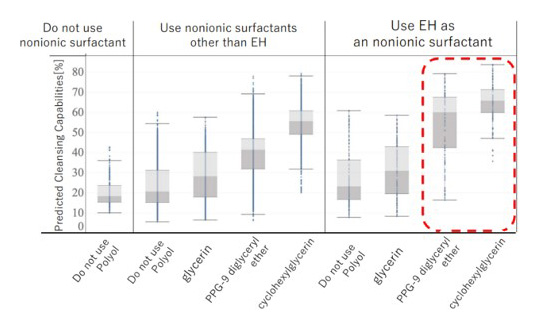
Figure 2 Trends in Predicted Cleansing Rates by Surfactant-Moisturizer Combination
-
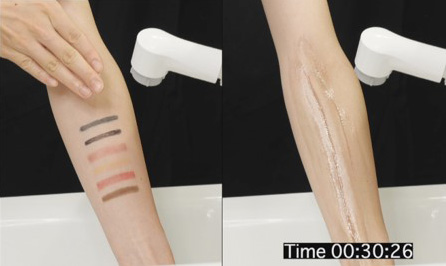
Figure 3 Cleansing effects of model cleansing agents on various types of stains
Top left image shows eyeliner, film mascara, lipstick, cream foundation, red-colored sebum, and mud stains; right image shows post-cleansing
Molecular Simulation Technology Reveals the Mechanism of Cleansing Agents
Keio University's molecular simulation technology was incorporated to further improve prediction accuracy. The makeup removal performance of a cleansing agent is considered to be strongly influenced by the structure of the surfactant molecules used, as well as the aggregate structure forming the surfactant and its adsorption state on dirt. Keio University used a molecular simulation technique called the DPD method*7 to simulate the structure and behavior of cleansing agent mixtures on a computer. After simulating more than 100 prescriptions, a correlation between the actual cleansing rate and the simulation results of how dirt is absorbed was found.
Furthermore, it became clear that there are characteristic differences in the structures formed in water between cleansing agents with high and low cleansing rates (Figure 4). In the future, we will incorporate the data obtained from the molecular simulation results into machine learning to improve the accuracy of the cleansing rate prediction system and to study its practical application.
*7 A type of molecular simulation, an analytical method that can reproduce phenomena in a more multicomponent and complex mixture of systems than conventional molecular simulations by treating atoms and molecules as a single group to some extent.
-
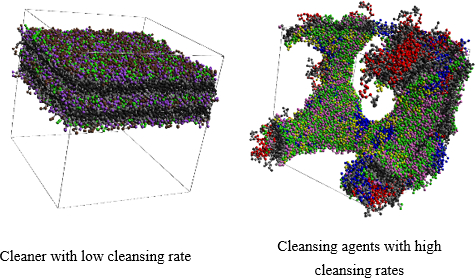
Figure 4 Result of molecular simulation by DPD method
Example of structures formed by ingredients in a cleansing agent reproduced on a computer
It can be seen that the cleansing agents with a high cleansing rate (right) has a more complex structure than the cleansing agent with a low cleansing rate (left).
Future Development
FANCL will continue to add information obtained from molecular simulations to machine learning to improve the accuracy of predictions, and based on the results of this research, will consider the commercialization of cleansing agents with high makeup removal functions. In addition, the research will continue with a view to horizontally expanding the product development process using AI technology to other product development in the future.
Kirin Holdings believes that the use of machine learning technology, simulation technology, and technology that combines both can be widely deployed in R&D for various businesses, including the health science business. Going forward, based on the knowledge gained from this research, Kirin Holdings aims to build a further foundation for research and development and deliver new value to its customers.
About Kirin Holdings
Kirin Holdings Company, Limited is an international company that operates in the Food & Beverages domain (Food & Beverages businesses), Pharmaceuticals domain (Pharmaceuticals businesses), and Health Science domain (Health Science business), both in Japan and across the globe.
Kirin Holdings can trace its roots to Japan Brewery which was established in 1885. Japan Brewery became Kirin Brewery in 1907. Since then, the company expanded its business with fermentation and biotechnology as its core technologies, and entered the pharmaceutical business in the 1980s, all of which continue to be global growth centers. In 2007, Kirin Holdings was established as a pure holding company and is currently focusing on boosting its Health Science domain.
Under the Kirin Group Vision 2027 (KV 2027), a long-term management plan launched in 2019, the Kirin Group aims to become “A global leader in CSV*, creating value across our world of Food & Beverages to Pharmaceuticals.” Going forward, the Kirin Group will continue to leverage its strengths to create both social and economic value through its businesses, with the aim of achieving sustainable growth in corporate value.
* Creating Shared Value: combined added value for consumers as well as for society at large.
GALLERY
-
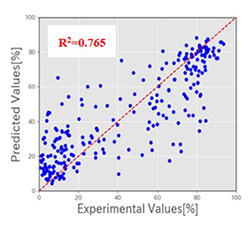
Figure 1 Comparison of AI predicted and measured cleansing rates
-
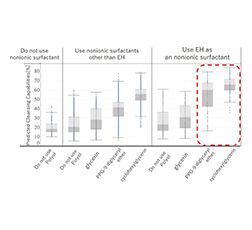
Figure 2 Trends in Predicted Cleansing Rates by Surfactant-Moisturizer Combination
-
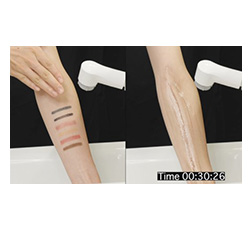
Figure 3 Cleansing effects of model cleansing agents on various types of stains
-
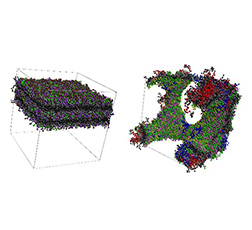
Figure 4 Result of molecular simulation by DPD method